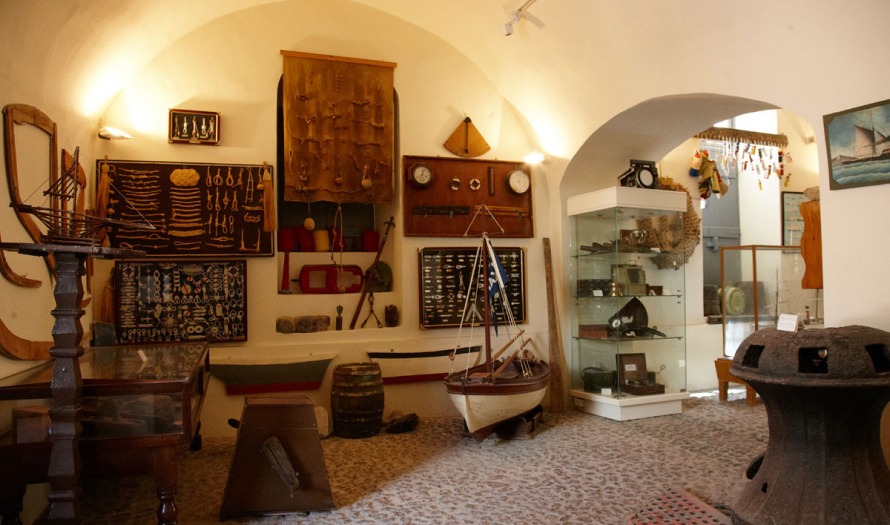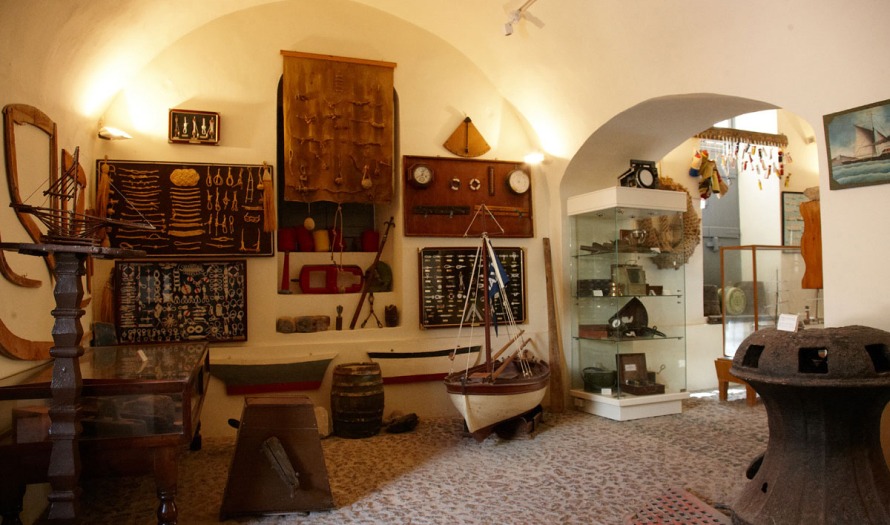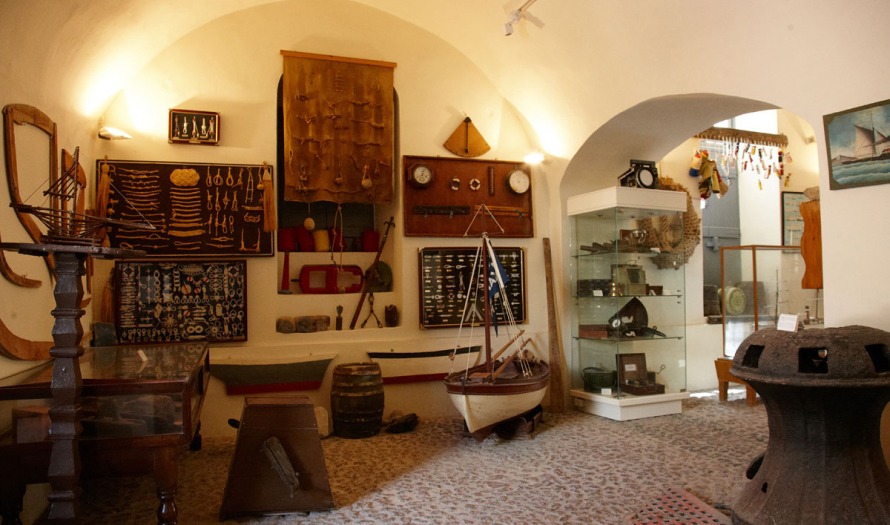The festivities
In Santorini, as in many other islands of the Aegean Sea, people are churchy and they express their faith to Virgin Mary, Jesus and the Saints by building, or restoring, dozens of churches in the settlements and in the countryside. An additional reason for the residents of Santorini was that for centuries they lived under the fear of earthquakes and the erruptions of the volcano.
The religious festivals are organized in the church or in the festival-house (“panigirospito”) on the day a Saint is celebrated. In previous years this was an important event, because people didn’t have many other opportunities for entertainment. That’s why during the year many festivals were organized.
Preparations start one or two days before the celebration day. Following the cleaning of the church and before the vespers, the pictures are decorated with seasonal flowers and the church is ornamented with small and large colorful flags. In some villages the road leading to the church is laid with rosemary branches. If the church is public, money for the religious festival (“panigiri”) is raised from the residents. When private, expenses are fully undertaken by the owners.
At present the festival takes place after the service on the day of the Saint’s celebration.The preparation of the “panigiri” namely all the food offered to the worshipers, takes place in the “panigirospito” which is located beside the church.
Men cook in large cauldrons and serve the traditional fava beans, bean soup and capers. “Panigiri” often includes haddock, Santorinian tomato-meatballs, bread, cheese and tomatoes. The abundant wine is a must. Musicians also attended in the past, playing violins, lutes and bagpipes while other people used to dance and sing. The feasting went on all night.*
* Extract from Fira’s high school assignment. Professor in charge: Christophoros Mindrinos.
Important festivals
Festivals with plenty of food, music, wine and traditional dances take place during the days of great religious celebrations such as the Pagania Mirtidiotissa’s in Kamari, the Panagia Platsani’s in Oia, the Crosse’s in Perissa, the 15th of August celebration in several villages and in the monastery of Prophet Εlias. One of the biggest festivals on the island takes place during the celebration of 15th of August in Panagia Episkopi. The process of cooking fava and other beans in large cauldrons start on the eve of the celebration.
-The festival of Aghia (St) Matrona. For details read the section Finikia.
-The festival of the Savior in Pyrgos: According to tradition on the eve of the celebration of the Savior, youngsters of the village steal from the girls’ courtyards pots of basil and use them to decorate the dome of the temple.
In Therassia
The most important festival is that of The Assumption of the Blessed Virgin Mary into Heaven celebrated on the 15th of August in Kera. Other festivals taking place are those of Aghiou (St) Ioannou on the 24th of June in Manolas, Aghia (St) Irene on the 5th of May in Riva, the patron of Chora (Manolas) Aghios (St) Constantinos on the 21st of May, Prophet Ilias on the 20th of July in Kera, Panagia Giatrisa on the 21st of September in Potamos, Panagia of Presentation on the 21st of November in Agrilia.
info
- The festival house is a place fully equipped with benches, tables, tableware etc. In small churches where those too are small, people sit on the courtyard’s benches. After the service the priest distributes the bread and the procession of the Saint’s picture follows. The festival takes place after that.



